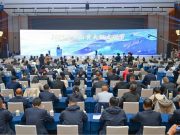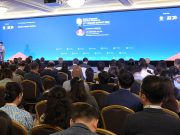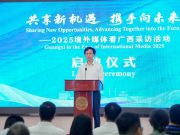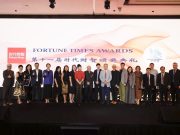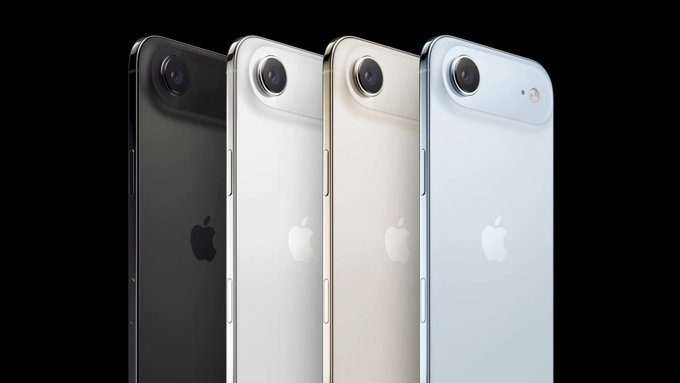
(Singapore, 10.09.2025)Apple’s annual product launch on September 9 created a buzz, with the new, ultra-thin iPhone 17 Air stealing the show. Apple is banking on the device to boost sales and mark a new strategic direction. However, this year’s launch is more than just a new phone; it’s a high-stakes move in the ongoing AI race, all while the company navigates the turbulent waters of US tariffs and investor skepticism.
The unveiling at Apple’s annual product launch, a key date for tech enthusiasts and investors, felt different this year. The atmosphere was urgent. Apple is under immense pressure on several fronts, particularly from the White House. President Donald Trump is pushing the company to move manufacturing out of China, a shift that would upend its global supply chain. Compounding the challenge, Trump’s high tariffs are already hurting the bottom line. CEO Tim Cook announced in July that tariffs cost Apple $800 million last quarter, with an estimated $1.1 billion impact this quarter alone.
This financial headwind, coupled with a broader trend of consumers holding onto their smartphones for longer before upgrading, has put a damper on Apple’s stock performance. Since Trump took office in January, Apple shares have dropped more than 3 per cent, reflecting investor concerns about the company’s ability to maintain its profit margins.
The iPhone 17 Air: A New Era of Thin
Against this backdrop, Apple is betting on a product that hopes to ignite a “super-cycle” of upgrades. The iPhone 17 Air, which CEO Tim Cook called “a total game changer,” is designed to be a fresh take on the smartphone. At just 5.6mm thick, it’s the thinnest iPhone ever made, a design choice that industry analysts see as a strategic pivot. Rather than focusing on larger screens, which have become the industry norm, Apple is positioning ultra-thin design as its new premium selling point.
The new device features Apple’s most powerful iPhone chip to date, the A19 Pro. The company claims the new processor is not only more powerful but also more energy-efficient, a crucial detail given the challenges of fitting a high-capacity battery into such a slim body. The iPhone 17 Air promises all-day battery life, with up to 40 hours of video playback.
The iPhone 17 Air, which starts at US$999 (about S$1,280 in Singapore), will be available for pre-order on September 12, with a full release on September 19. The Air joins Apple’s standard lineup, which includes the iPhone 17 base model and the top-of-the-line iPhone 17 Pro. The standard iPhone 17 with 256GB storage is priced at US$799, while the iPhone 17 Pro starts at US$1,099 for a 256GB model.
A Cautious Step into the AI Race
While all the new devices incorporate some level of generative AI technology, Apple’s presentation was notably light on major AI announcements. The company made no major breakthroughs beyond updates to its “Apple Intelligence” suite, which was launched in late 2024. This measured approach stands in stark contrast to rivals like Google, which has been aggressively showcasing its Gemini AI models in its latest phones.
Apple’s AI push has struggled to gain traction since its initial launch. Users have been particularly underwhelmed by the improvements to Siri, which many feel remains surprisingly basic despite years of promises. The company has reportedly been in talks with Google to integrate its search and AI expertise, a move that would highlight the challenges Apple faces in competing with Google’s advanced AI capabilities.
Analysts believe the iPhone 17 Air’s super-slim profile could be a stepping stone toward a long-rumored foldable iPhone, expected as early as 2026. This would allow Apple to compete with rivals like Samsung and Huawei, which already offer foldable smartphones and have been gaining market share, particularly in China.
The Tariff Dilemma
One of the most notable decisions Apple made was to hold prices steady on its new lineup despite the increasing costs from tariffs. This move, which was widely anticipated by Wall Street, reflects Apple’s willingness to absorb the costs to remain competitive. As Tom Mainelli, head of IDC’s Device & Consumer Research Group, explained, Apple is “leveraging their scale to try to keep prices where they are.” He added that the company is “acutely aware” that tariffs will impact consumers’ ability to spend, and it is holding the line on prices to make it possible for people to upgrade.
However, this decision comes with a cost. Apple shares fell 1.35% shortly after the pricing details were announced, reflecting investor concerns about the company’s ability to maintain its profit margins.
In addition to the new iPhones, Apple also introduced the AirPods Pro 3, which features enhanced noise cancellation and live translation capabilities. The new Apple Watch Series 11, which includes 5G connectivity and extended battery life, also drew attention with its new heart health monitoring features, including a blood pressure monitor, which is pending regulatory approval.
The company said it expects the feature to notify 1 million people and will make it available in 150 countries, a move that could significantly broaden the appeal of the Apple Watch beyond fitness enthusiasts.
As the new iPhones hit the market, the tech world will be watching to see if Apple’s gamble on a new design and a cautious AI strategy will pay off, or if the mounting pressures from tariffs and fierce competition will continue to weigh on the company’s future.




